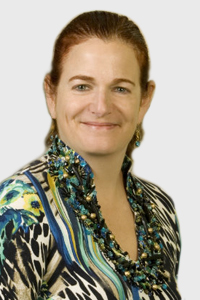Wednesday, October 4, 2023
The Truth About Mammograms: Debunking Common Myths
Breast cancer is one of the most prevalent cancers – one in eight women will develop breast cancer in their lifetime. Mammograms — low-dose X-ray screening procedures for the breast — are critical for detecting breast cancer early, which can lessen the need for aggressive treatment and lead to higher survival rates.
Despite its effectiveness, there are several misconceptions about mammography that may prevent people from getting screened. Here are five of those myths, debunked.

Myth #1: Mammograms can be uncomfortable
Many people may be hesitant to get mammograms because they believe the procedure will be uncomfortable. Though mammograms can cause pressure on the breast and can result in mild discomfort, it’s usually very brief and not severe.
“The compression of the breast is necessary to obtain clear images of the tissue,” explains Karen Karsif, MD, Medical Director of The Center for Breast Health at WMCHealth’s Good Samaritan Hospital. “The amount of pressure can be adjusted based on your individual comfort level, so be sure to communicate with your physician or mammogram tech during the procedure.”
To reduce the risk of discomfort, you may want to try to avoid scheduling your mammogram close to your period, when your breast tissue is more likely to be sensitive.
Myth #2: All forms of breast cancer can be detected with a mammogram
While mammograms are an effective tool in detecting breast cancer, they are not foolproof.
 |
| Karen Karsif, MD |
“Some breast cancers may not show up on a mammogram, particularly in people with dense breast tissue,” says Dr. Karsif. “In some cases, additional screening such as an ultrasound or MRI may be needed.”
Myth #3: Mammograms expose you to dangerous levels of radiation
Mammograms do expose the breast to a low level of radiation, but the benefits of early detection far outweigh the risks.
Radiation exposure is measured in millisieverts (mSv). The radiation dose for a mammogram is approximately 1.2-1.5 mSv.The United States Department of Energy estimates that the average American receives approximately 6.2 mSv/year from the sun and soil.
And a three-hour plane trip exposes a person to 0.1 mSv, so one roundtrip flight from New York to San Francisco (12 hours) exposes a person to approximately 20% of the radiation received during a routine 3D mammogram.
“It’s important to note that radiation exposure during mammograms is carefully monitored and regulated,” says Dr. Karsif. “All mammogram equipment in the U.S. is regulated and certified yearly by the Food and Drug Administration (FDA) through the Mammography Quality Standards Act, (MQSA) established in 1997.”
Myth #4: My last mammogram was all clear, so I can skip my next one
“Despite conflicting recommendations, women need to get mammograms every year at least until age 75,” says Dr. Karsif.
Myth #5: Most women with breast cancer have a family history of breast cancer
“Only about 5 to 10 percent of breast cancers are considered hereditary,” explains Dr. Karsif. “Most breast cancers are sporadic, which means that there can be no family history of breast cancer in these patients. Therefore, all women, regardless of family history, should follow the recommended guidelines for their age and risk level.
Don’t let fears or misconceptions about mammograms stop you from taking control of your breast health. To learn more or schedule an appointment, reach out to Center for Breast Health.